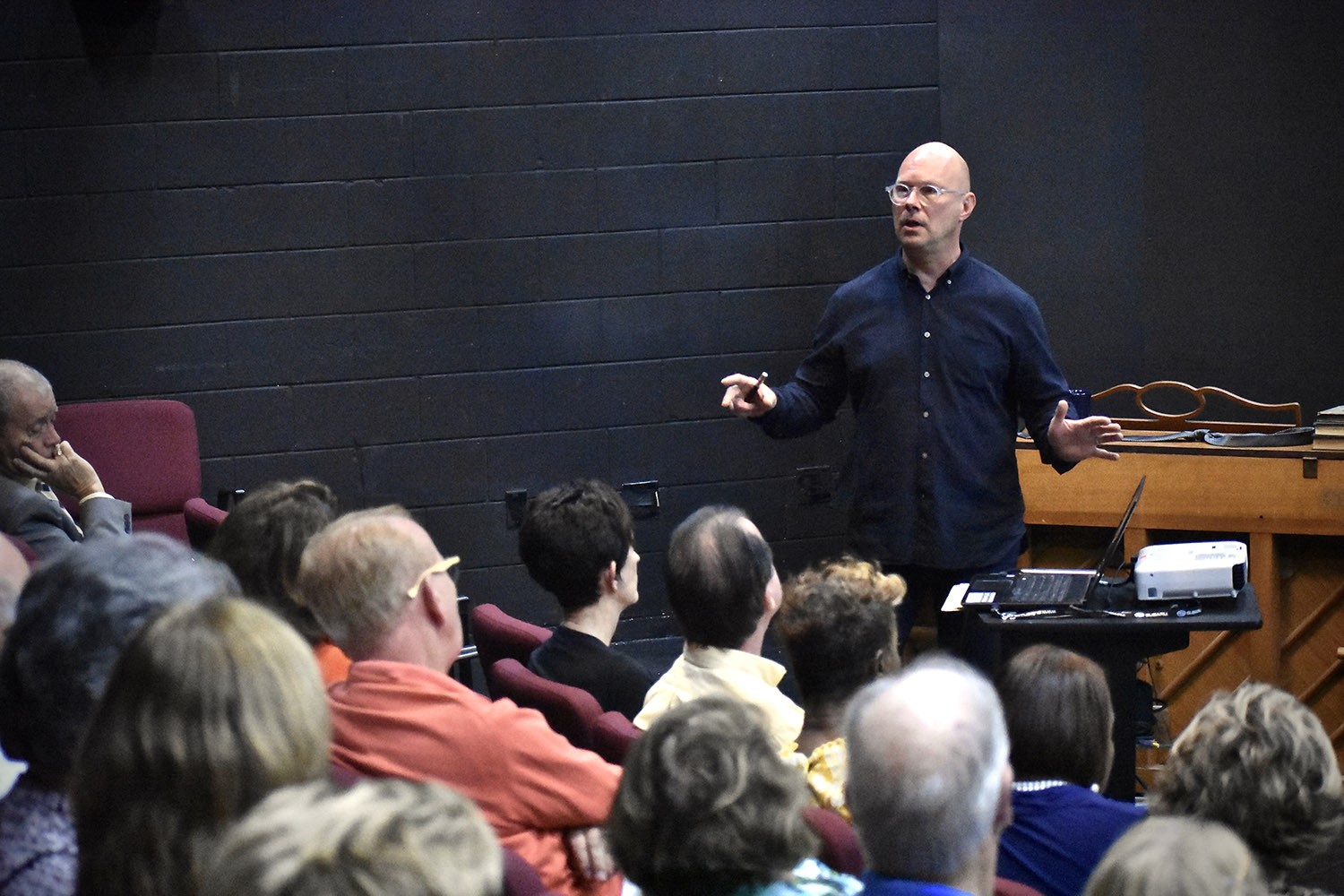An Afternoon with Uncle Andy
Arts & Culture
SRQ DAILY WEDNESDAY PHILANTHROPY EDITION
WEDNESDAY OCT 30, 2019 |
BY ANDREW FABIAN
Pictured: Donald Warhola talks to attendees about the man behind the iconic portraits.
Andy Warhol’s public persona exists as a sort of template for the modern artist. Aloof, mysterious, shy and prone to bouts of whimsy, Warhol captured the attention of the masses in the burgeoning age of television, frustrating attempts by interviewers to get a straight answer out of him and creating accessible art that had all of the weight of an increasingly brand-conscious media landscape And though Warhol was certainly shy and a bit eccentric, he, like any person, possessed a multi-faceted personality. To Donald Warhola, he was known as Uncle Andy.
Warhola, Andy Warhol’s nephew, sits on the board of The Andy Warhol Foundation for the Visual Arts and recently gave a talk called Warhol: Parellels and Dichotomies at the Manatee Performing Arts Center that explored the man behind the enigmatic persona. The “parallels” confirm some of the public perceptions of Warhol’s life, but the “dichotomies” illuminate a whole new side of the soft-spoken artist. Warhola remembers his uncle as a man with very traditional values—he ate well, exercised, had a close relationship with his family, went to church and volunteered regularly—hardly the kind of lifestyle that would make headlines. “My belief is that once his career took off he started to see the importance of his brand,” says Warhola, “and that controversy sells.”
But Warhola says his uncle never allowed any controversy from his celebrity parties at The Factory to affect his family ties. Warhola remembers trying to pry information from Uncle Andy about the time he met Sylvester Stallone, but he deflected the question and asked how school was going. Uncle Andy was similarly tight-lipped when his family watched Duran Duranleave his studio after a portrait session. “He was very good about compartmentalizing his life,” says Warhola, “and he was very protective of his family.” And this, says Warhola, is arguably the most important part of his uncle’s legacy and indicative of his overarching philosophy in both his life and his art. “Under a high school year book photo,” says Warhola, “my uncle wrote that he wanted to be as authentic as a fingerprint.” Through a career that was sometimes ridiculed, often celebrated and always making headlines, Warhol maintained his connection to the working-class roots of his immigrant family and left an artistic legacy whose commercial success belied its profound sense of humanity.
Pictured: Donald Warhola talks to attendees about the man behind the iconic portraits.
« View The Wednesday Oct 30, 2019 SRQ Daily Edition
« Back To SRQ Daily Archive









